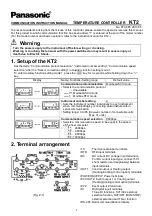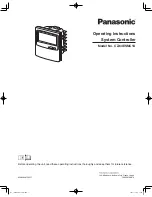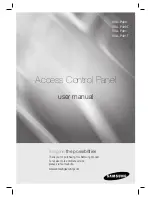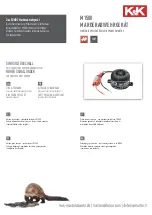
Curtis 1243
GEN
2 Manual
76
8 — MAINTENANCE
8
CONTROLLER MAINTENANCE
There are no user serviceable parts in the Curtis 1243
GEN
2 controller.
No
attempt should be made to open, repair, or otherwise modify the controller.
Doing so may damage the controller and will void the warranty.
It is recommended that the controller be kept clean and dry and that its
fault history
fi
le be checked and cleared periodically.
CLEANING
Periodically cleaning the controller exterior will help protect it against corrosion
and possible electrical control problems created by dirt, grime, and chemicals
that are part of the operating environment and that normally exist in battery
powered systems.
When working around any battery powered vehicle, proper safety precau-
tions should be taken.
These include, but are not limited to: proper training,
wearing eye protection, and avoiding loose clothing and jewelry.
Use the following cleaning procedure for routine maintenance.
1. Remove power by disconnecting the battery.
2. Discharge the capacitors in the controller by connecting a load
(such as a contactor coil or a horn) across the controller
’
s
B+
and
B-
terminals.
3. Remove any dirt or corrosion from the connector areas. The
controller should be wiped clean with a moist rag. Dry it before
reconnecting the battery. The controller should not be subjected
to pressured water flow from either a standard hose or a power
washer.
4. Make sure the connections are tight, but do not overtighten
them. See Section 2, page 7, for maximum tightening torque
speci
fi
cations for the battery and motor connections.
FAULT HISTORY FILE
The handheld programmer can be used to access the controller
’
s fault history
fi
le. The programmer will read out all the faults the controller has experienced
since the last time the history
fi
le was cleared. Faults such as contactor faults may
be the result of loose wires; contactor wiring should be carefully checked. Faults
such as overtemperature may be caused by operator habits or by overloading.
After a problem has been diagnosed and corrected, it is a good idea to
clear the fault history
fi
le. This allows the controller to accumulate a new
fi
le of
faults. By checking the new history
fi
le at a later date, you can readily determine
whether the problem was indeed
fi
xed.
For instructions on accessing the history
fi
le, see Appendix B.
☞
C A U T I O N








































